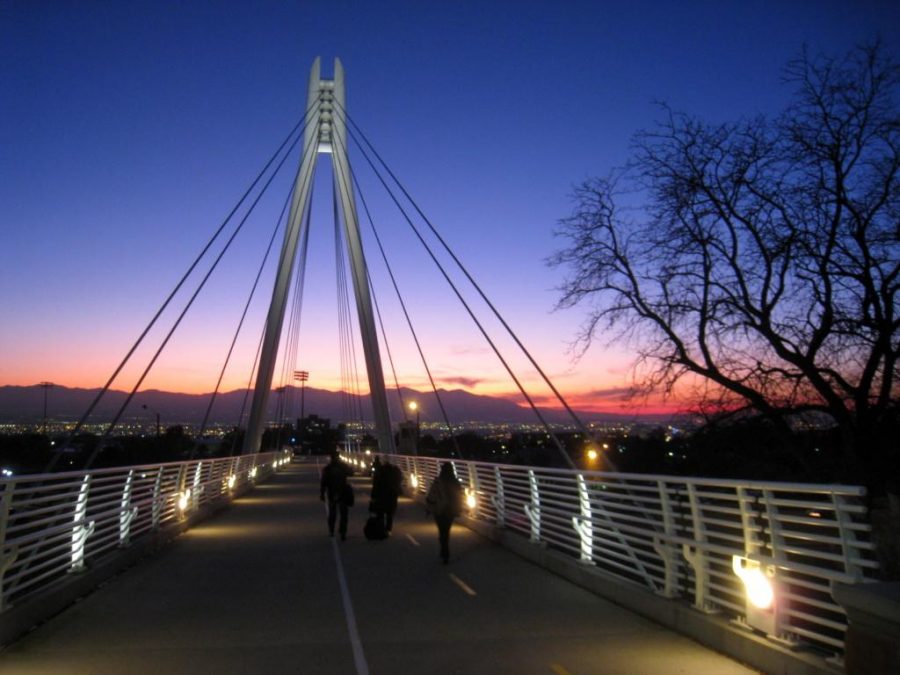I think it’s a pretty widely accepted fact that the shuttle system at the University of Utah is not ideal. Between inconsistent schedules and inconvenient times, the buses are somewhat of a struggle for students on their way to and from class. Somehow you’re either 20 minutes early for class or five minutes late, no matter what. But as bad as the day buses are, the problems at night are much more severe.
The night shuttles come infrequently, only once every half hour. They run long circuits which are time-consuming to ride. They are poorly coordinated with night class schedules, leaving students to stand outside at the bus stop for long periods of time as they wait for the bus to finally arrive. Night classes can end as late as 10 p.m., but long before that it becomes dark in the winter and fall months. As people face long periods of time waiting at the bus stops, that exposes them to weather and the elements, such as rain, snow and freezing temperatures in Utah’s brutal winters.
Not only are the night buses inconvenient as a form of transportation, but they also are potentially dangerous for those who need to use the shuttles. The bus stops are poorly lit and many of them are fairly remote. Unless you have a class at the Union or the tip of President’s Circle, you have to walk across the dark campus to get to one. Not many students take night classes, so campus is very empty. Buildings close much earlier than classes finish, so if you accidentally wander outside without checking when a bus is going to arrive, you can’t get back in in case of an emergency. A dark area with a low population can encourage violence and crime. If someone is standing alone in an area which appears remote and unprotected, they run a much higher risk of being attacked. This is especially problematic for women on campus, as, statistically, one in three women are sexually assaulted during their time in university. Just as the #MeToo campaign has demonstrated, sexual assault and harassment are very common for women, as well as men. This has brought the issue into a new light for many, demonstrating through friends and family how common and traumatic these experiences are. Being alone on campus after dark can increase the already high risk to you and your loved ones.
Students who take night classes often have no other choice. Perhaps they work a day job or the class is simply not taught at another time. If someone feels unsafe, it’s not as easy as just not taking night classes. They are regularly unavoidable for many students.
The University of Utah needs to take better measures to protect its students from harm. Our campus is very poorly lit at night and bright lights should be installed in areas with student traffic, and especially in areas like bus stops where students must stand and wait on their own with minimal options for escape and protection. Night buses should also come more frequently to help students get where they need to be faster and to decrease the long and risky wait time at the bus stops. A university is responsible for providing as safe a campus as possible for its students, and the University of Utah is not doing a proper job of this.
letters@chronicle.utah.edu



Self • Oct 31, 2017 at 9:12 pm
I have to agree with the lack of lighting and concerns of safety. Commuter services needs to address the bus system to be more effective in regards to night line.
Sarah Hall • Oct 31, 2017 at 5:10 pm
I agree with this! As a female on campus, I was concerned about taking Astronomy (which is only offered at night) once I realized the night bus situation was less than optimal. I would have liked to have taken this class, but I didn’t feel safe walking back up to the dorms after class, around 9:00.